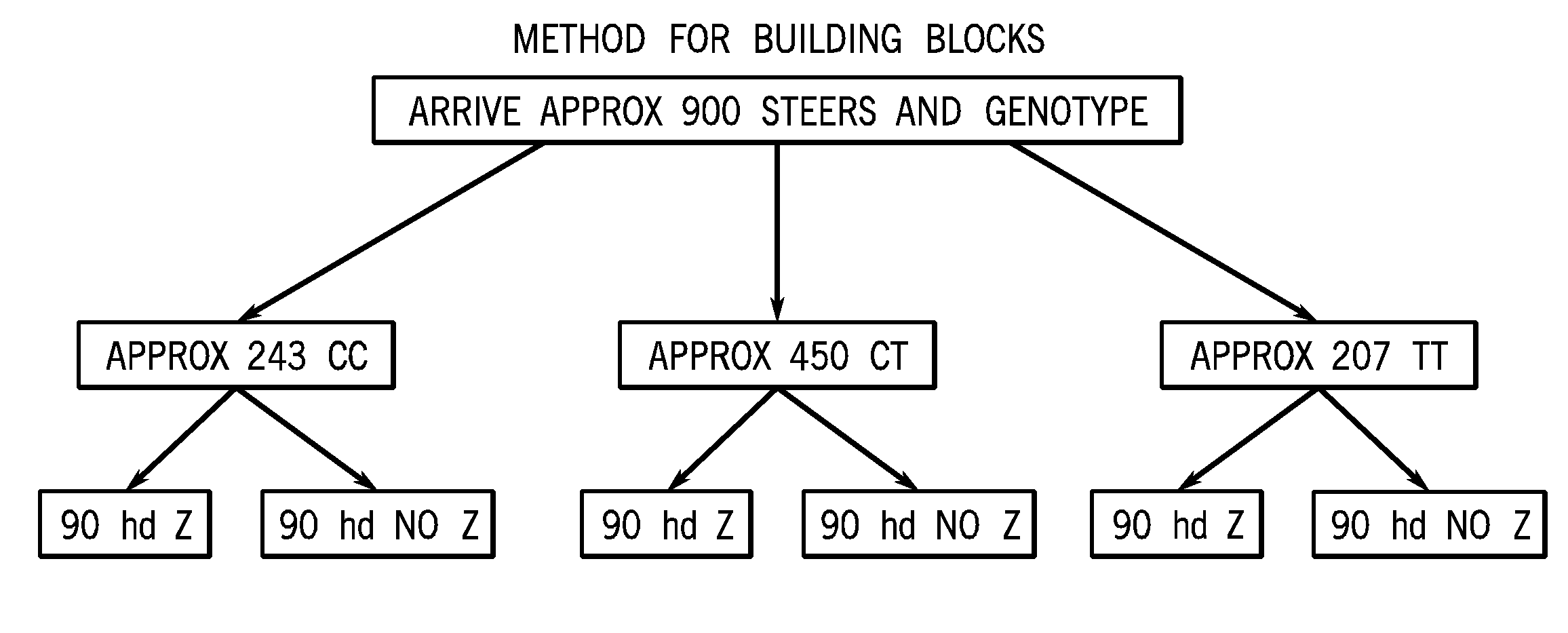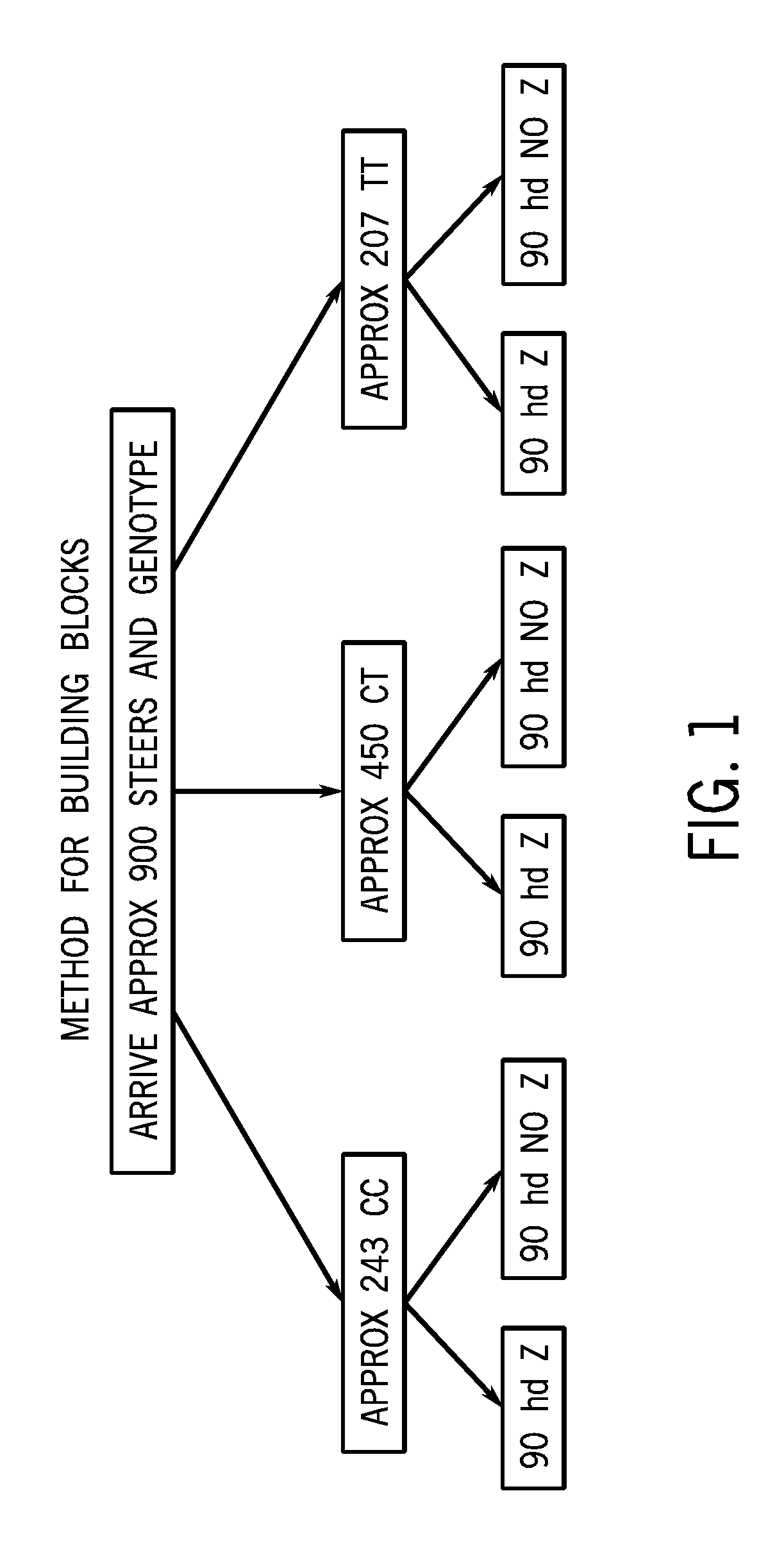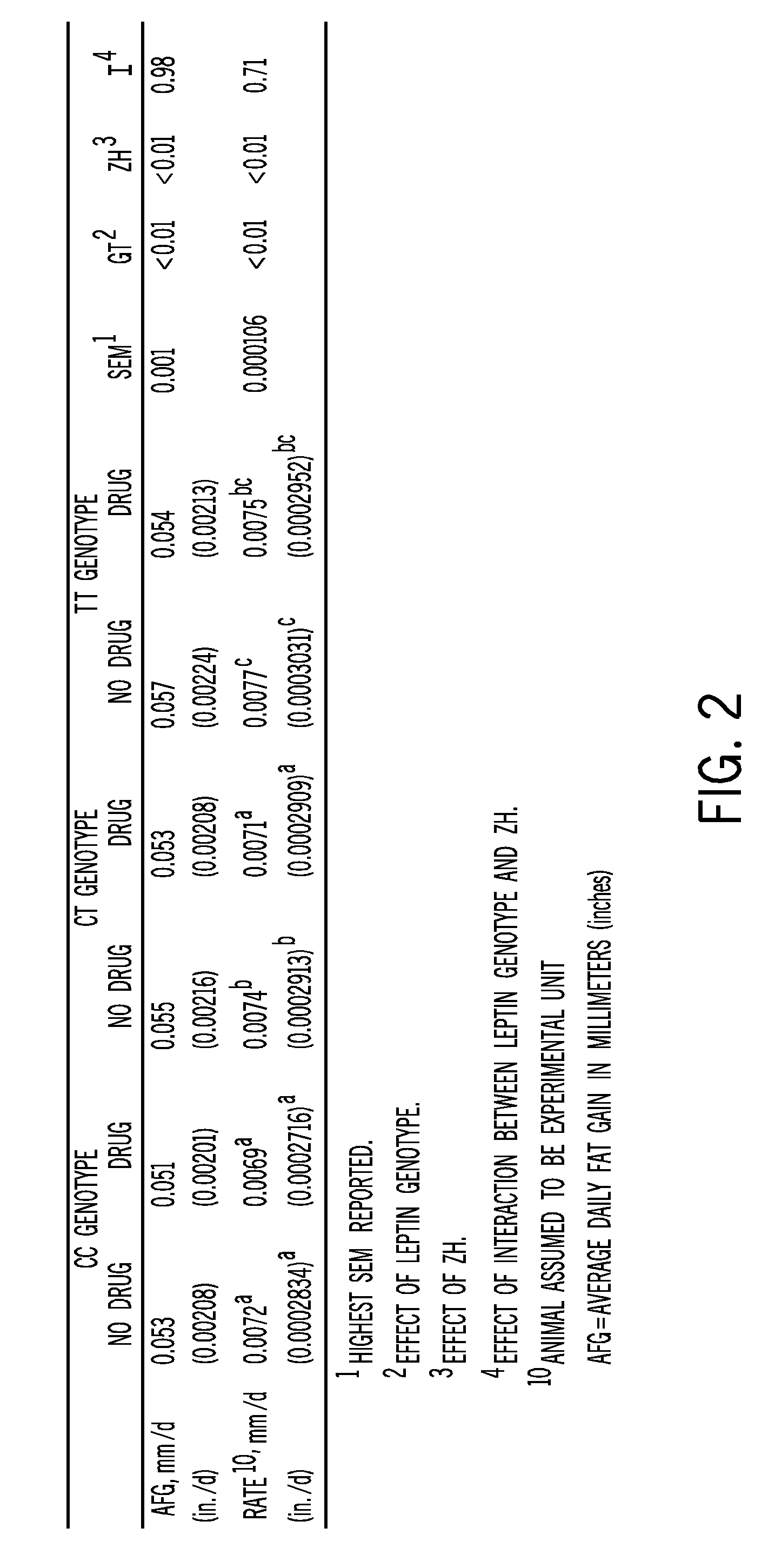Leptin genotype and ß-adrenergic agonists
- Summary
- Abstract
- Description
- Claims
- Application Information
AI Technical Summary
Benefits of technology
Problems solved by technology
Method used
Image
Examples
Embodiment Construction
[0061]In a trial completed at a private research facility in Texas, USA (Cactus Research, Amarillo Tex.) leptin genotype was assessed for potential interaction with Zilpaterol Hydrochloride (ZH). The trial consisted of 4,279 animals and occurred from summer of 2008 and carried through to spring of 2009. The trial was conducted as a randomized complete block design with approximately 90 animals being placed into pens based on leptin genotype and randomly assigned to drug treatment with pen being the experimental unit. Treatment structure was a 3×2 factorial including three letting genotypes (CC, CT and TT) and two drug treatments (zero control and drug treatment). Pens were blocked by time, specifically arrival date of the animal to the feedlot. Each block was slaughtered on the same day, and the complete process replicated eight times resulting in eight blocks. Below is a schematic summary of the trial design.
[0062]Upon arrival into the feedlot animals were individually weighed and ...
PUM
| Property | Measurement | Unit |
|---|---|---|
| Mass | aaaaa | aaaaa |
| Size | aaaaa | aaaaa |
| Body weight | aaaaa | aaaaa |
Abstract
Description
Claims
Application Information
 Login to View More
Login to View More - R&D
- Intellectual Property
- Life Sciences
- Materials
- Tech Scout
- Unparalleled Data Quality
- Higher Quality Content
- 60% Fewer Hallucinations
Browse by: Latest US Patents, China's latest patents, Technical Efficacy Thesaurus, Application Domain, Technology Topic, Popular Technical Reports.
© 2025 PatSnap. All rights reserved.Legal|Privacy policy|Modern Slavery Act Transparency Statement|Sitemap|About US| Contact US: help@patsnap.com



